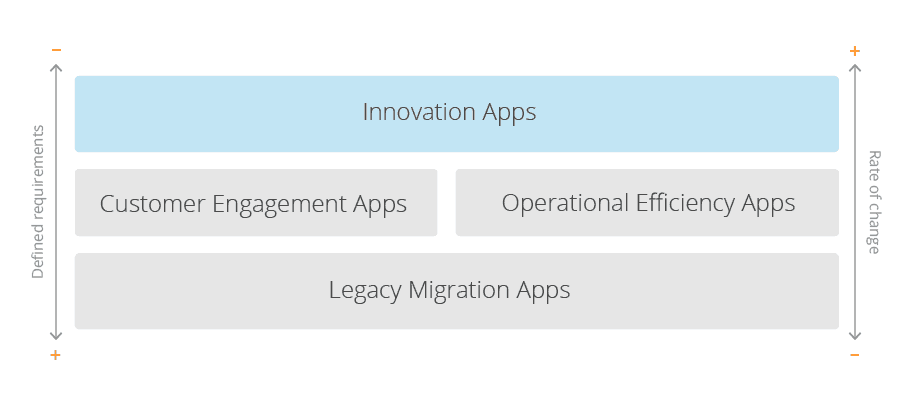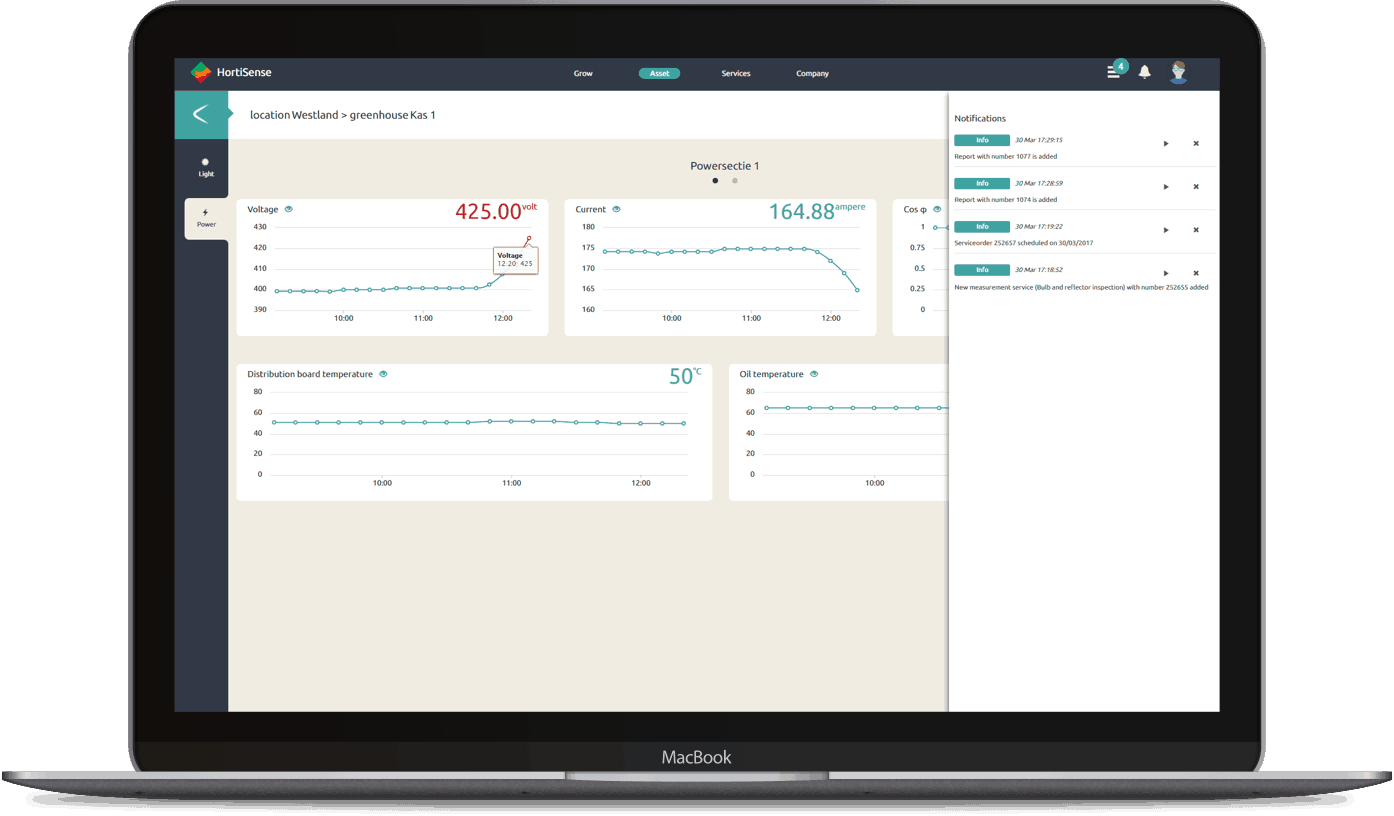In a previous blog post, I outlined four common use cases for using a low-code platform: innovation apps, customer engagement apps, operational efficiency apps and legacy migration apps. This blog post will focus on the unique challenges of innovation apps and how a low-code platform helps address them.

Innovation apps come from ideas for new business models, products and go-to-market channels to help grow and differentiate the organization. Often, they leverage emerging technologies like IoT, AI and Machine Learning to unlock new sources of value for the business. Either way, because innovative apps start as ideas, with fuzzy requirements prone to a high rate of change, they require a high degree of business involvement throughout the entire development process to ensure they deliver their intended value.
Thus, the process for developing these applications is different from other types of apps. Not all of the ideas will be successful, but that’s ok, as long as your team can explore new ideas, failing fast and moving on to the next idea or continuing to iterate toward optimal outcomes. With this in mind, applications need to start small as prototypes and quickly scale upon success. This type of development can pose challenges for many organizations.
Challenges of Developing Innovation Apps and their Low-Code Solutions
Length, cost and risk of traditional development:
Within many enterprises, innovation projects often never get off the ground because of the length, cost and risk of using traditional development approaches. A low-code platform removes the impediments to experimentation, enabling a test-and-learn approach where new ideas can be vetted quickly and inexpensively.
Achieving the intended business value:
There is often a large gap between the business and IT in the traditional development process. The result of this disconnect is an app that doesn’t deliver the intended business value.
Low-code development empowers business users to build prototypes leveraging advanced technologies and core systems, so the solution—and its intended value—can be refined before a full-on development process occurs. Look for a platform that enables business users to easily build prototypes, and enables developers to leverage emerging technologies and legacy systems with minimal dependencies on IT through smart connectors.
Fuzzy requirements:
The nature of an innovation project is that it is impossible to know all the requirements up front. With traditional development, this often leads to the wrong functionality being built, resulting in an unsuccessful app. By using a low-code platform, you can implement an iterative design and delivery approach with feedback loops to ensure apps deliver their intended business value. Look for a low-code platform with an easy-to-use project portal with built-in agile project management to encourage iterative development while actively including the business and incorporating their feedback.
Scaling innovation projects:
Many innovation apps never leave the prototype stage and don’t get operationalized at scale. Using a low-code platform ensures that new apps can move from prototype to large-scale production once success is proven. Look for an enterprise-grade platform with cloud-native architecture, pluggable DevOps build chain for continuous integration and continuous delivery, and integration of enterprise-specific monitoring tools.
Examples of Innovation Applications Built on a Low-Code Platform
There are many examples of innovation apps, including AntTail’s medicine tracking app, Solomon Group’s RFID wristband event access app, KLM’s IoT equipment tracking app, and Heijman’s IoT-based smart building management app.
I’d like to dive deeper into one great example of an innovation app, Hortilux’s IoT-based crop yield optimization app. Hortilux is a supplier and installer of high-quality grow light installations for greenhouses. Their mission is to help their clients, horticulture growers, with year-round greenhouse production, ensuring consistent and uniform quality levels of crops. Hortilux began as a manufacturer of grow light fixtures, but to maintain its position as a market leader and provide high-quality services, Hortilux started looking for ways to expand the solutions it provides to growers.
Through the use of IoT, the company radically transformed its business model. They realized that the new frontier for increasing crop yield was to optimize availability and lifetime of grow light systems and help reduce energy cost by providing growers insight into light levels and advice on smart light strategies. To accomplish this transformation, Hortilux created HortiSense, a digital platform for growers. HortiSense provides insight into greenhouse performance using sensors that are placed inside the greenhouses to monitor various grow light processes and collect data on system performance and energy consumption. Software applications interpret the data and present valuable information to the grower anytime, anywhere, and on any device.

This new connected application enables them to drive smarter operations and reduce the cost of service and maintenance activities. Growers benefit from longer lifetime and higher levels of availability of the equipment and can use the data from sensors to optimize their grow light strategies for energy cost and yield per square mile.
This innovative idea didn’t develop overnight. The path to innovation was iterative and explorative. The challenge was not so much the technology but finding ways to offer customers a valuable experience. This is where Mendix’s low-code platform came in. The collaborative environment for business and IT to jointly explore and prototype ideas, the visual deployment with integrations to IoT technologies and other backend services to rapidly build web and mobile apps, and the 1-click cloud deployment allows for a low-cost test and learn approach.
Key Takeaways
Low-code platforms enable organizations to take a test-and-learn approach to innovation, exploring new ideas quickly and at low cost. Business users can build functional prototypes and collaborate seamlessly with development teams to extend apps with complex logic and integrations, allowing the organization to iterate toward optimal outcomes and quickly scale once ideas are proven.
Learn more about the value of low-code platforms in the recent Forrester Wave on Low-Code Development Platforms.

